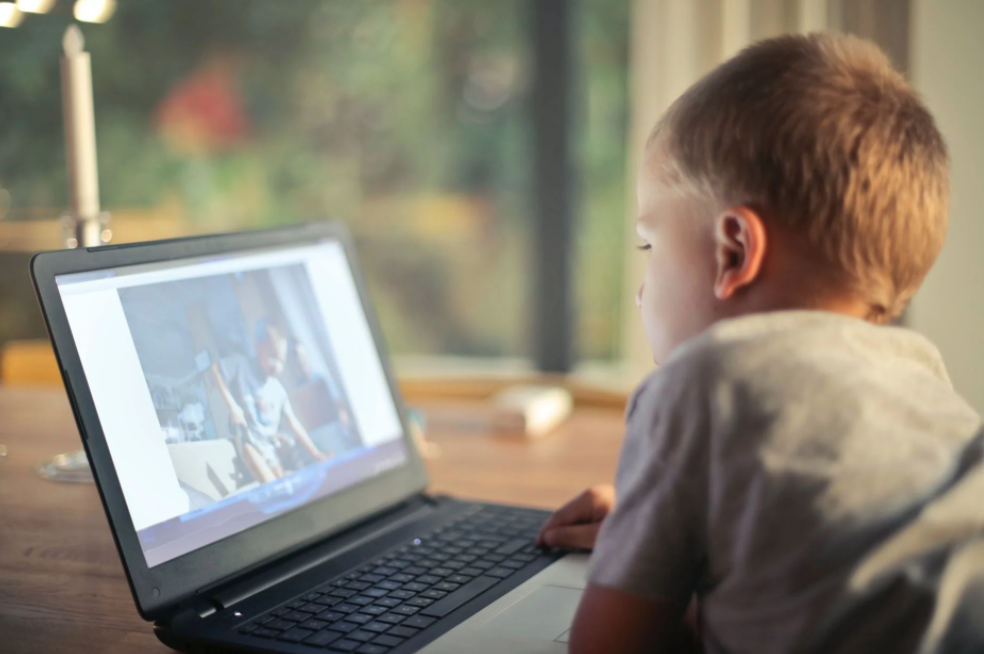Keeping children occupied and out of trouble is stressful enough under the most normal of circumstances. When the whole family is cooped up at home, having to ensure your child is keeping up with their remote learning on top of other responsibilities can seem nearly impossible.
Fortunately, there are tools to help, as well as experts with advice to help assist you in your new role as teacher. These tips can help you manage your child’s education—as well as making everything else that’s going on a little less stressful.
Tip #1: Make learning fun. Make it engaging.

You know your children better than anyone else does. You know what interests them and what subjects might not be their favorite. Make the most of this time and help your child live out their passion project. Are they musicians? Build something interdisciplinary: In addition to practice time, have them read up on famous composers and the periods of history during which they worked. Music also lends itself to study of math and physics.
Is your child into video games? Their video game of choice just might reveal their hidden interests. While many seven-year-old players of Minecraft might not walk around saying they want to design buildings, reading up on architecture might prove fascinating to them (if not a possible future career). If your child has jumped on the Animal Crossing bandwagon, reading up on biology, ecosystems, and economics might be in order. Amid all of the homebuilding, said Nintendo game can be a useful lesson in budgeting and personal finance, especially when it comes time to pay off your island mortgage.
Are they avid readers? Go forth and conquer that pile of books, you know what learning style resonates with them. Tactile learners might appreciate the chance to make their geography lesson into a salt dough sculpture. What better way to learn a nation or continent’s mountain ranges and rivers than building them? More athletic children might benefit from a hike-turned-science lesson to identify plants and animals, or throwing a basketball to see a quadratic equation in action. Plus, it will have the added benefit of getting your child outside for some social distancing-approved fresh air.
Tip #2: During times like these, screen time is your friend.

Whatever your household’s usual position on children and electronic devices may be, during times of homeschooling, a bit of extra time on the computer or iPad might just be A+. Thanks largely to their instant feedback and built-in motivation to move up level by level, educational game sites can help make getting through multiplication tables, spelling, or world history that much easier for your child. Preschool and elementary school-aged kids can head to PBS Kids and hunt for treasure with Fossil Finder or build a rainforest ecosystem with Jungle Jeopardy. Help your child in grades K-5 knock one out of the park with Funbrain’s Math Baseball. Middle and high school-age children can try out some of the science experiments profiled on Engineering.com. No one with whom to practice their foreign languages? Budding linguists can keep their skills sharp with the BBC’s extensive language-learning site, which includes resources such as interactive videos and storytelling for 40 languages, including those commonly taught in US schools such as Chinese, French, German, and Spanish, as well as lesser-taught languages such as Gaelic or Polish that might inspire your child to learn more about your shared ethnic heritage.
Online educational games can also be the lesson in and of themselves. In addition to whatever classes your child’s school is doing via Zoom, digital tools can help you improvise for coursework whose curricula might not lend itself easily to virtual learning. Take a chance to bond with your child and take a work break by trying yoga or a HIIT workout on an exercise app, or head to a food vlog for some ideas to help your middle schooler apply his knowledge of family and consumer sciences (formerly known as home economics or living skills).
Beyond being an e-learning tool, during this time of social distancing, screens are our portals to the outside world. Take a field trip on a virtual art museum tour. Help your teen get assistance with trigonometry and calculus on a Discord channel. Or, just help your teen virtually, well, get out. Dave Anderson, clinical psychologist and the senior director of national programs and outreach at the Child Mind Institute, told Vox, “So much of what is central to the teen experience is their social life. If they need to catch up over FaceTime or Zoom, give them that outlet. Besides, didn’t we do the same thing for hours on end as teens—but over the phone?
Tip #3: Build a routine, but allow for flexibility.

K-12 students have set schedules: Whether their days are punctuated by recess or chemistry labs, they know when to switch from math to social studies to lunch. Along these lines, it might help for continuity’s sake to build in a similar structure to your child’s workday. If it will help keep your child on track to allot 45 minutes for English / language arts, then by all means do so. It can also help to have a designated area for study; e.g. the kitchen table or the home office.
This being said, just because you’re having your child dedicate 45 minutes to biology doesn’t mean that the learning has to take place from 7:30 to 2. If your teen wants to sleep in a bit, let them. Class can be from 9 to 4, or split up to allow for athletic breaks, or to accommodate your own working schedule. If your child tends not to be an independent learner, consider asking your job for flexible work hours and spending your days with your student. Fashion journalist Chavie Lieber told Vox that these days, she spends her usual working hours with her toddler, then does her usual day job in the evening, with a break for dinner.
Tip #4: There are times when children need breaks. Work in your breaks when they’re not taking theirs.

On this note, children tend to have shorter attention spans than adults, meaning that grown-up work time can complement parenting accordingly. A first-grader might need to have a picture book read to them, but can sit and color independently. Teenagers might need help finding food that they haven’t yet raided from the refrigerator, but then can go back to working on problem sets without needing supervision. Build in your breaks to match theirs. This being said, if your teen feels it’s naptime, as long as they get their work done, let them. Check in with your child’s teacher to see what needs to be a priority and what objectives they need to accomplish, and move forward accordingly. As NPR points out, “You’re not going to recreate school in one day, so start small.”

